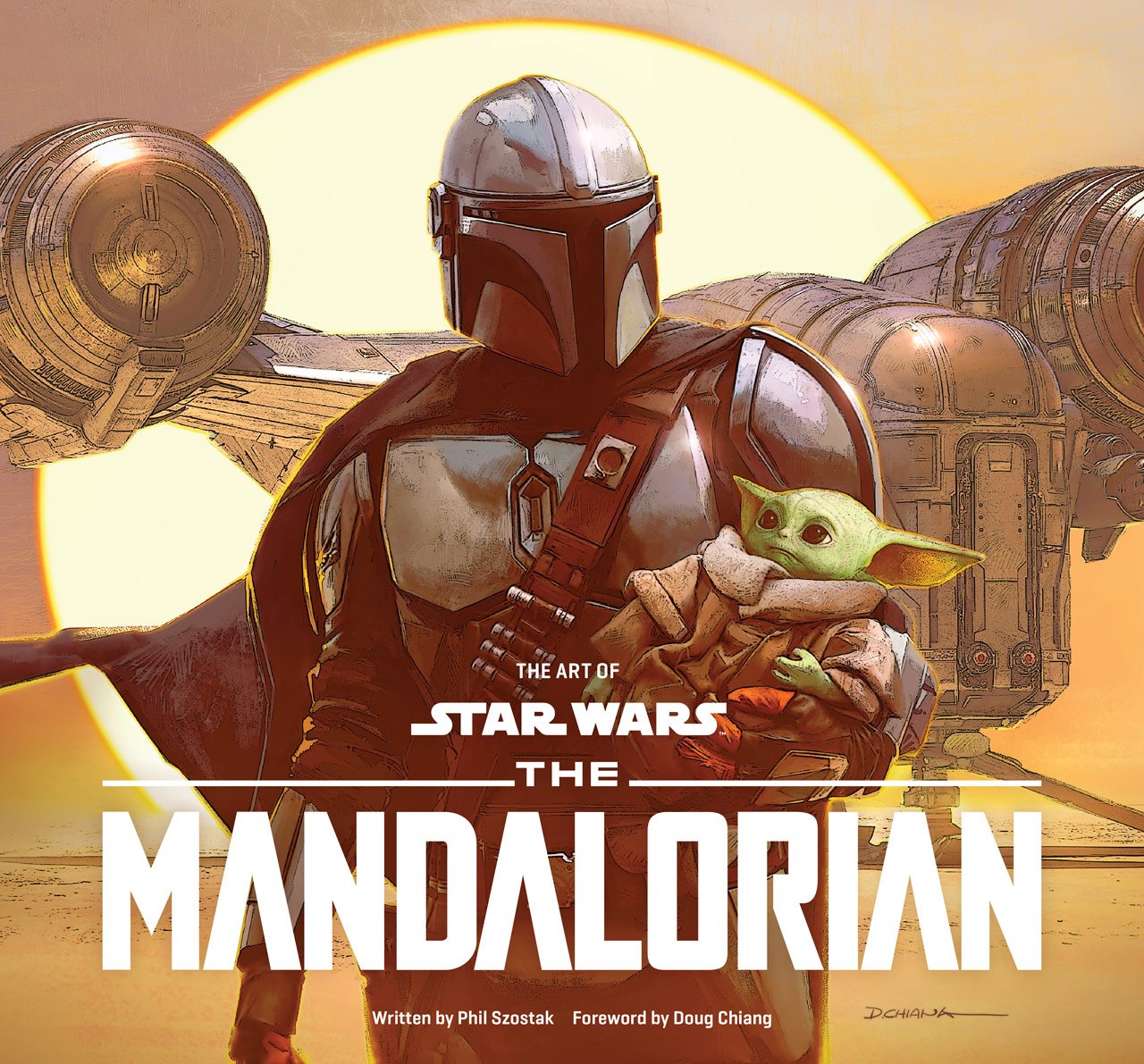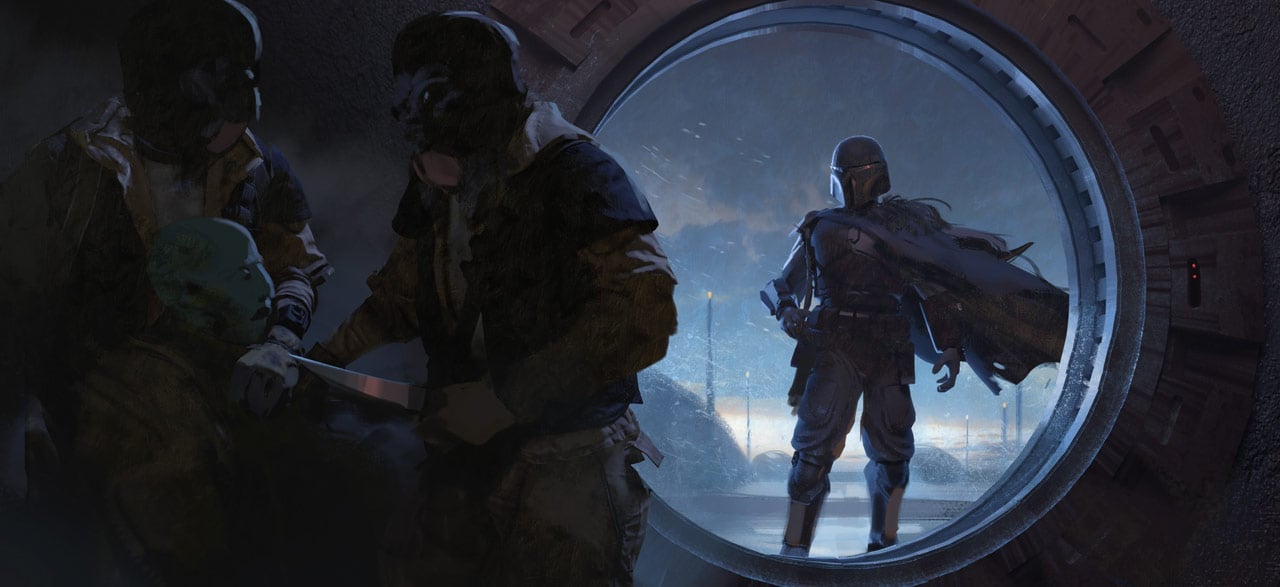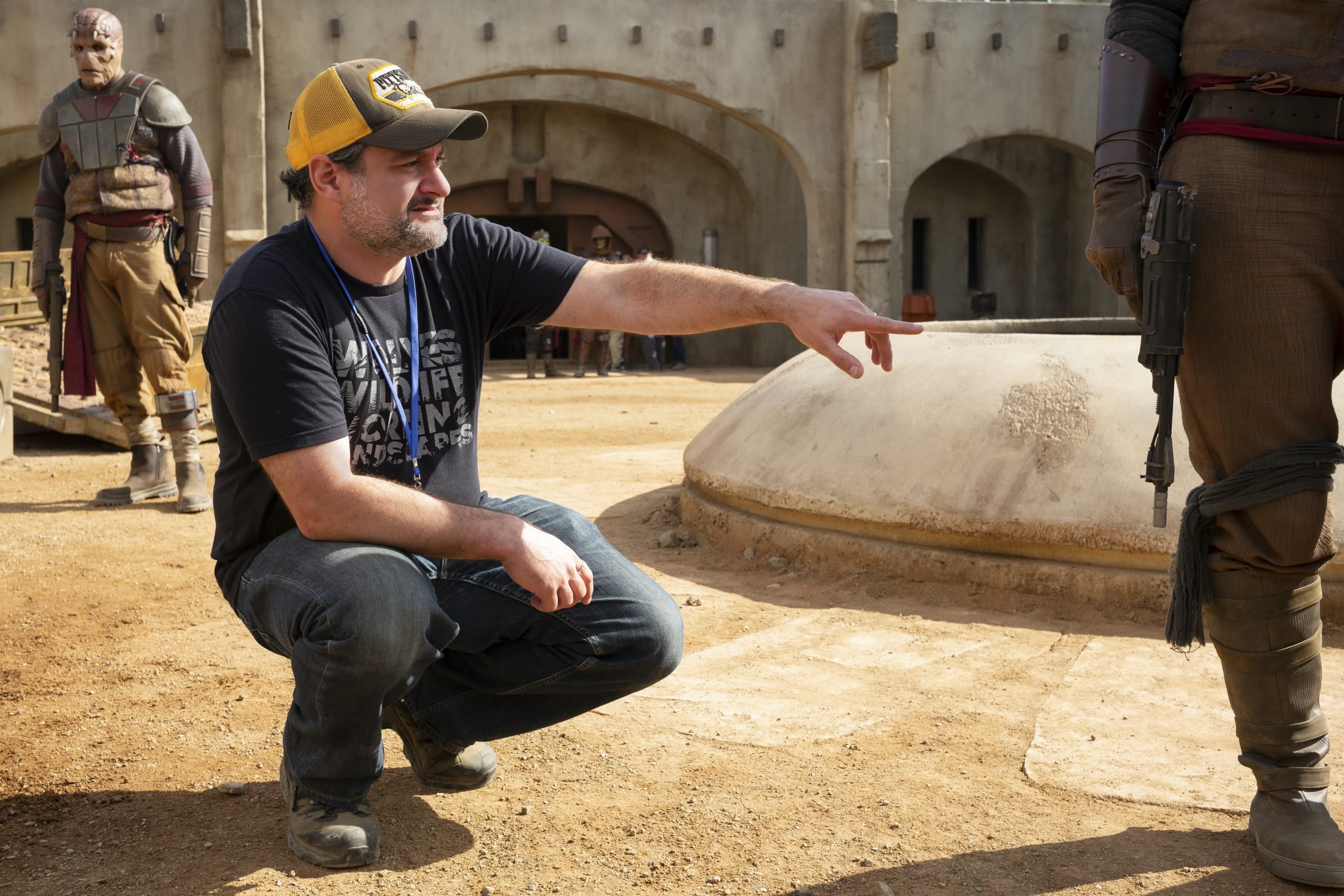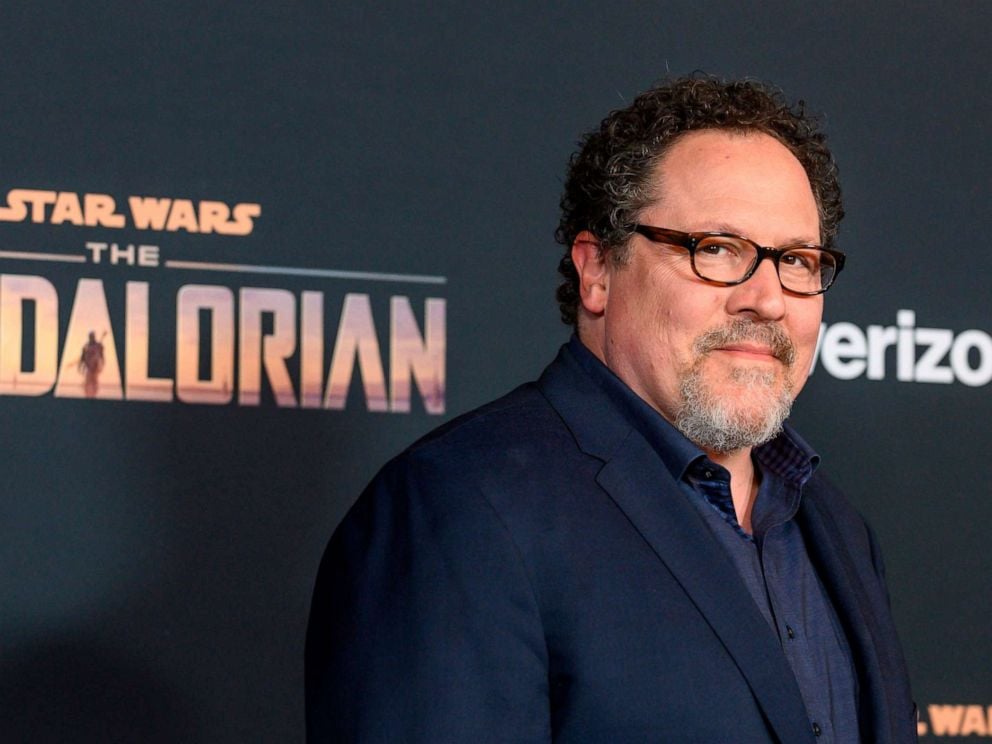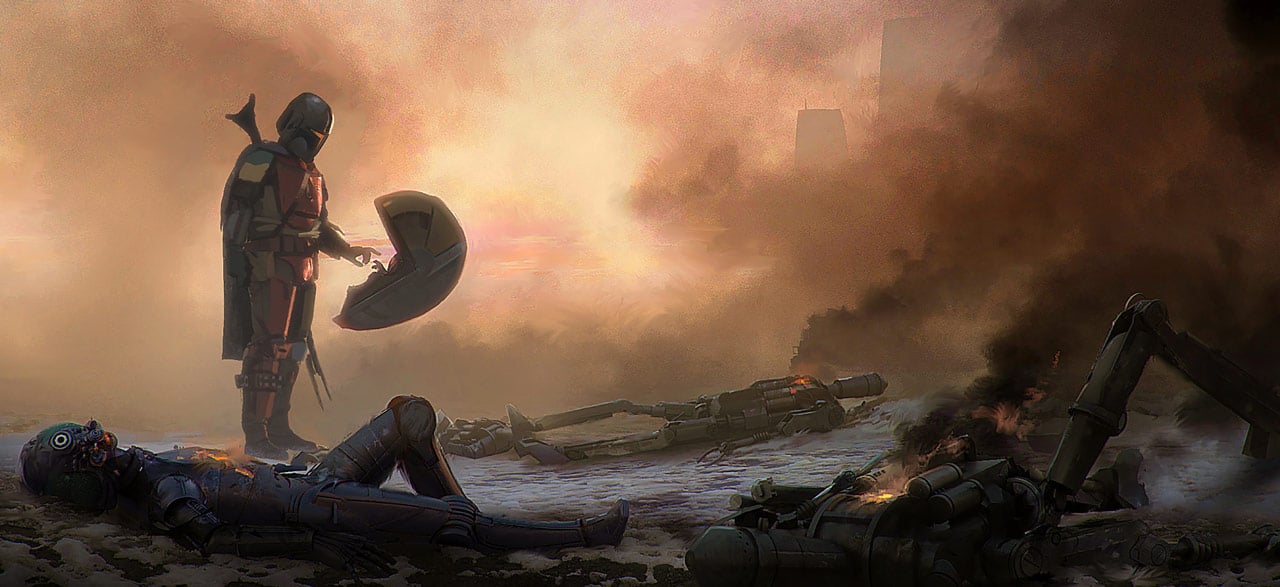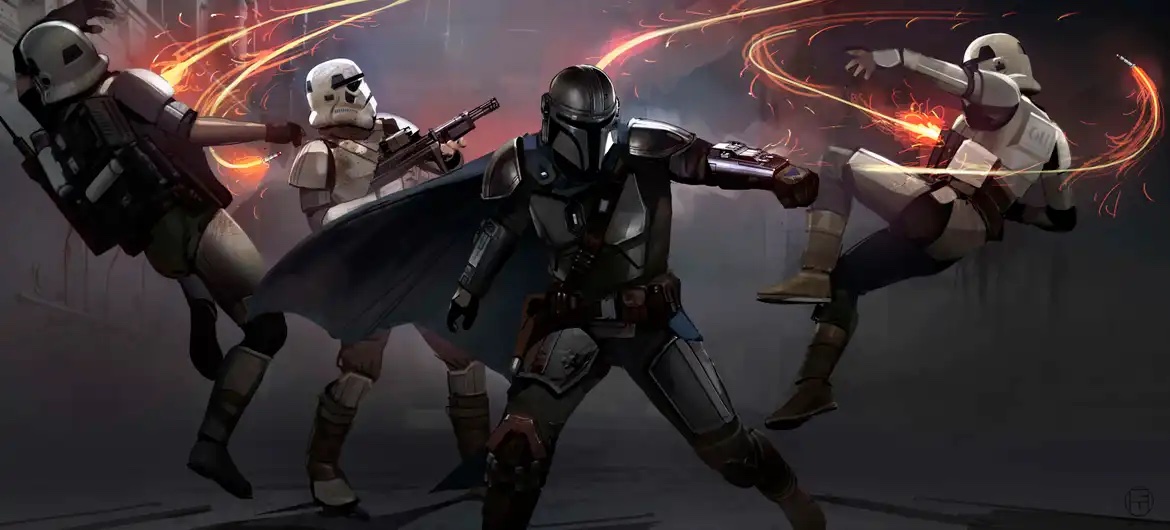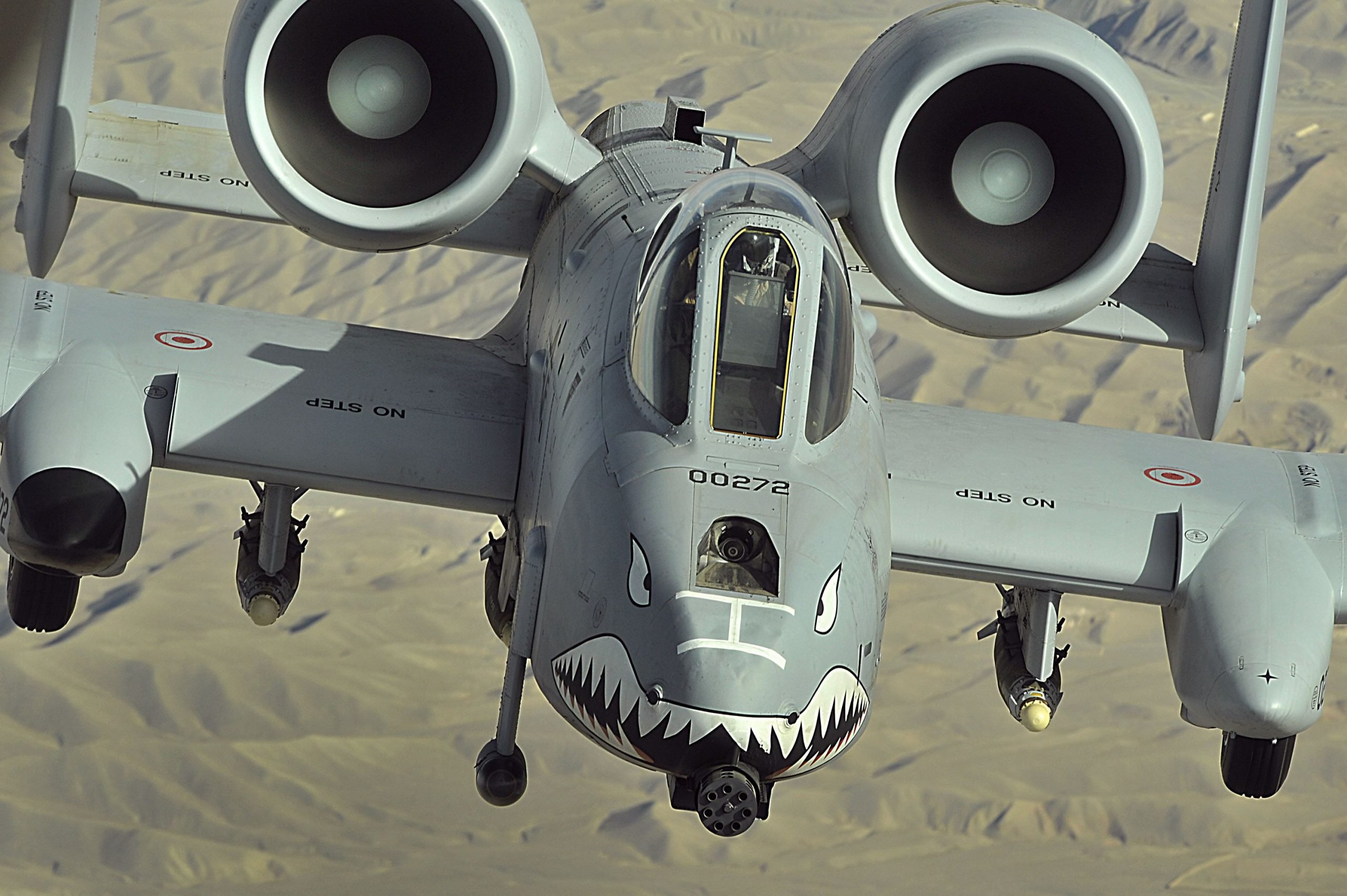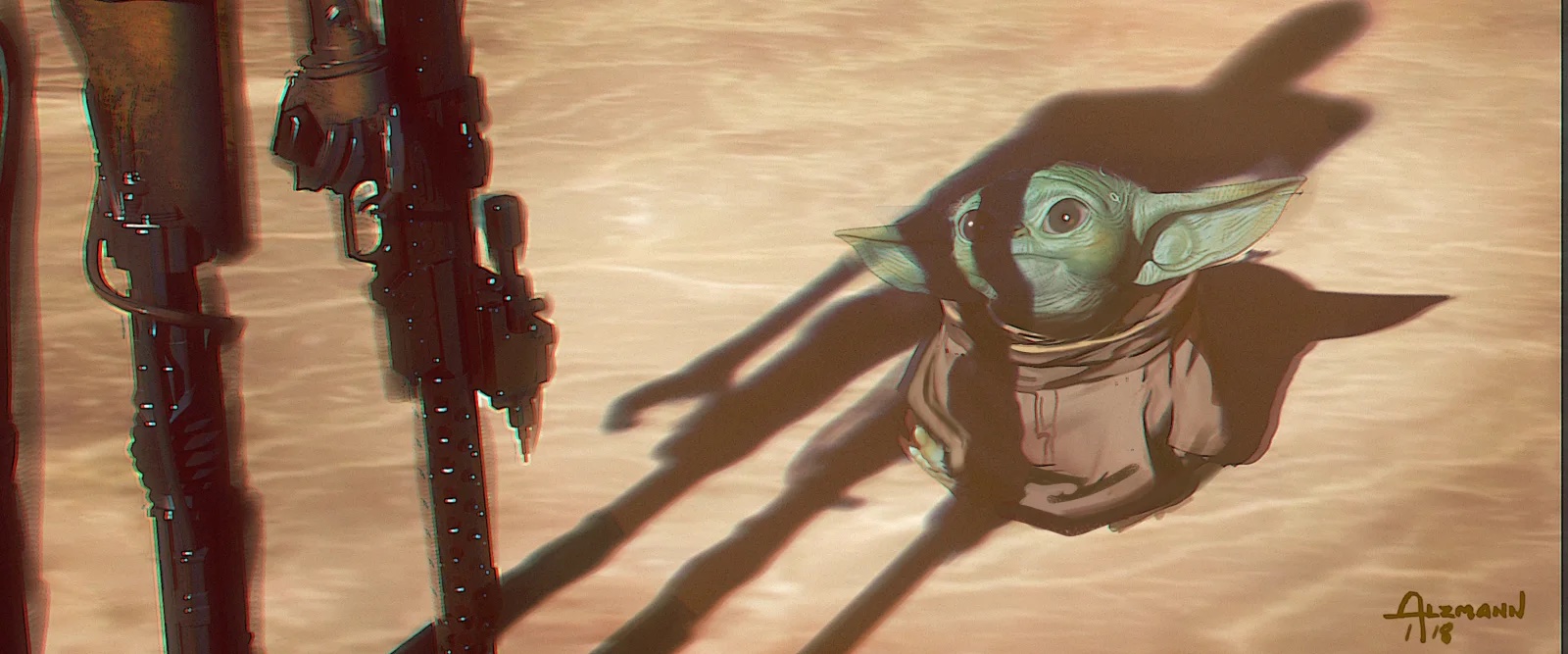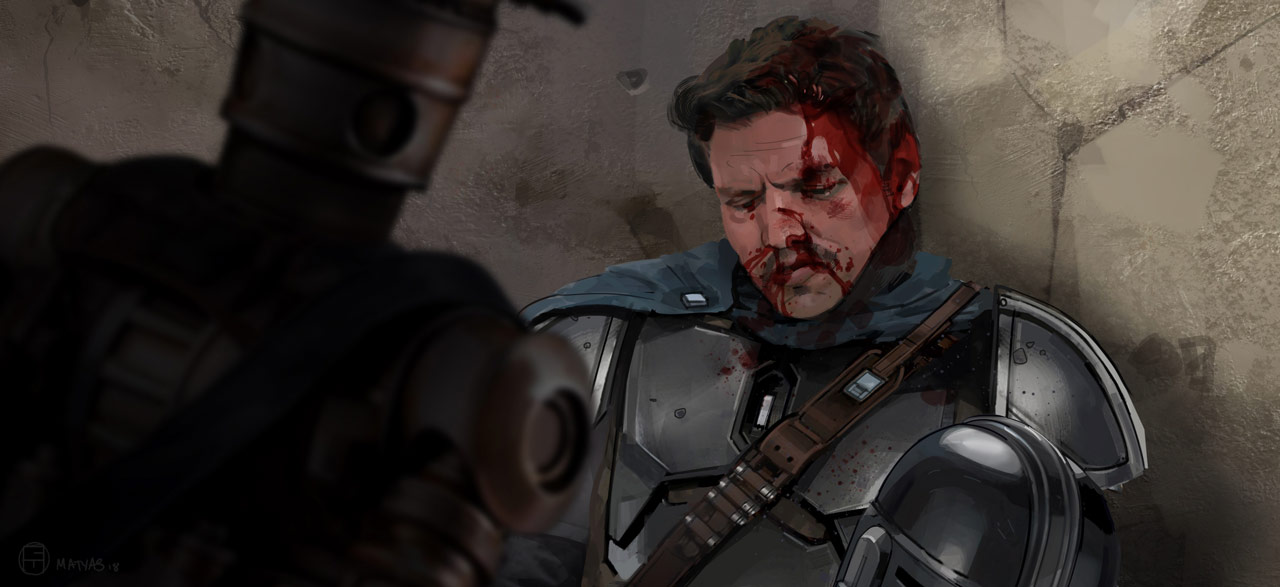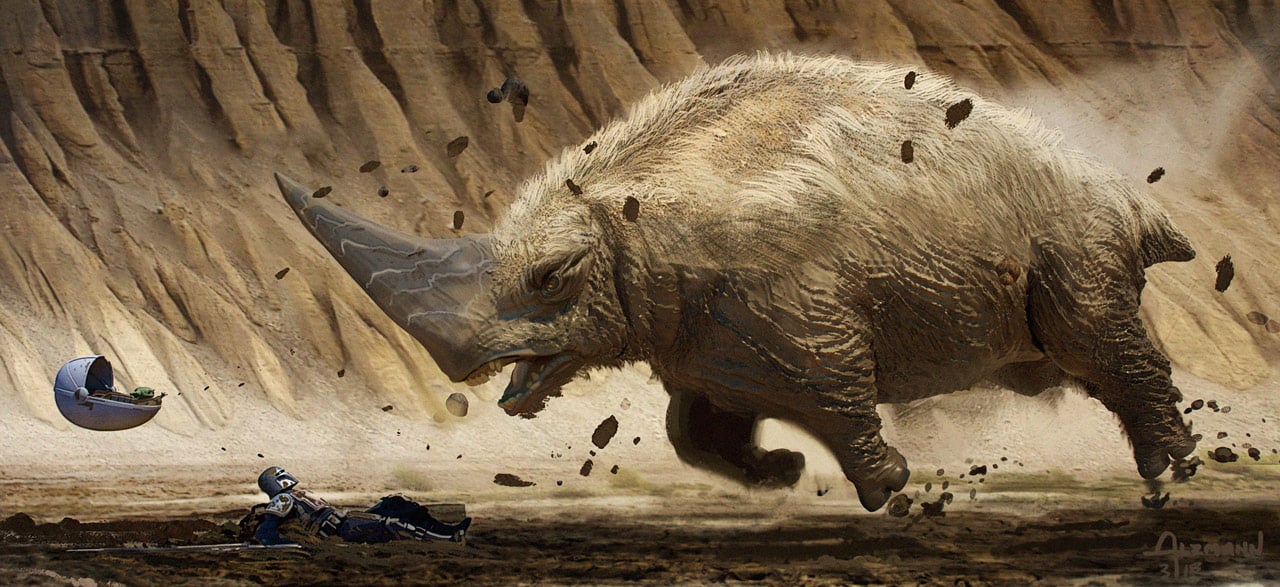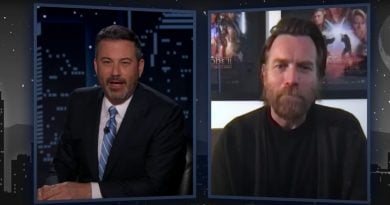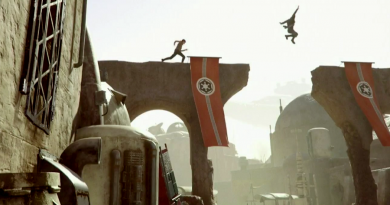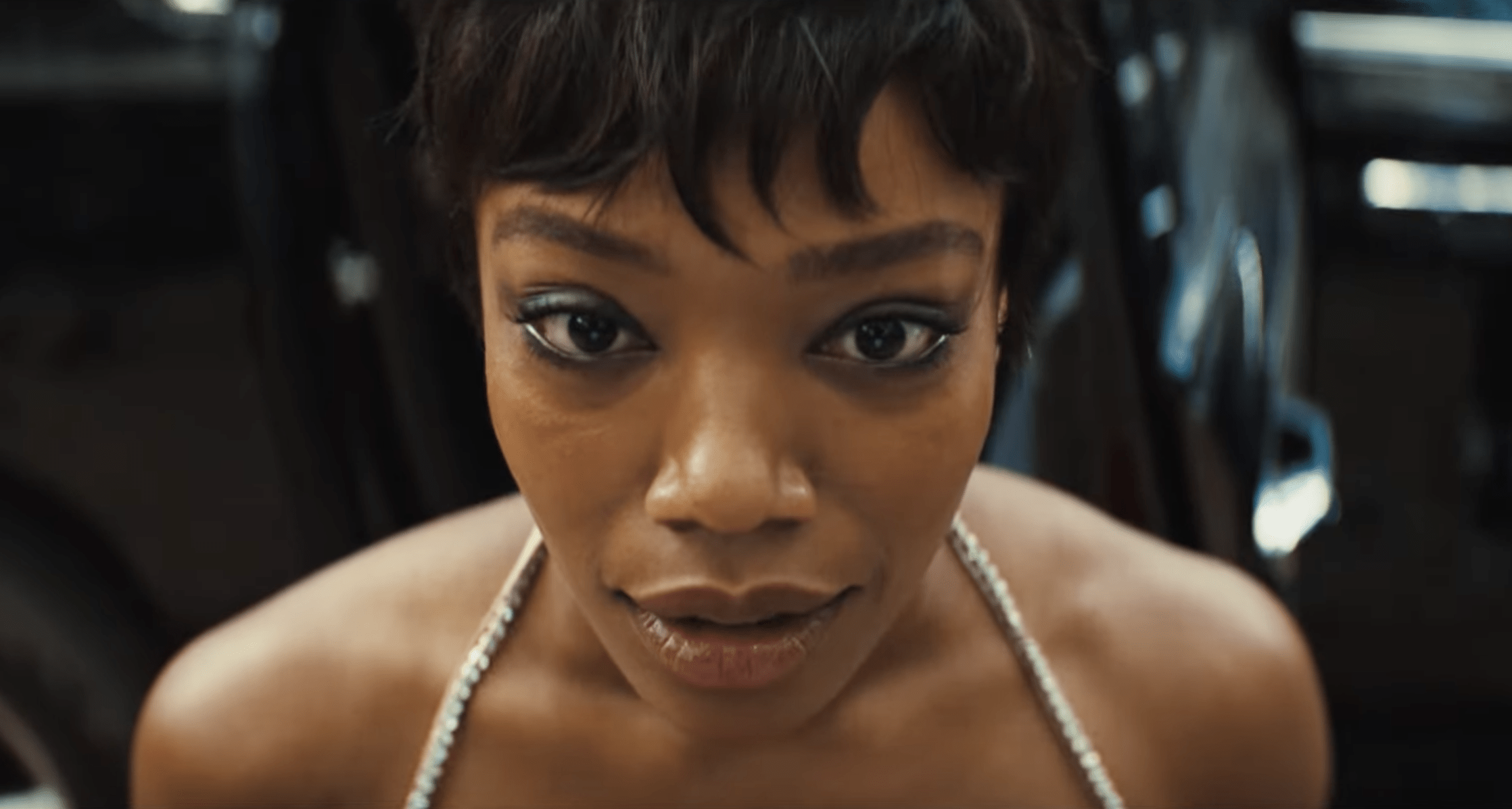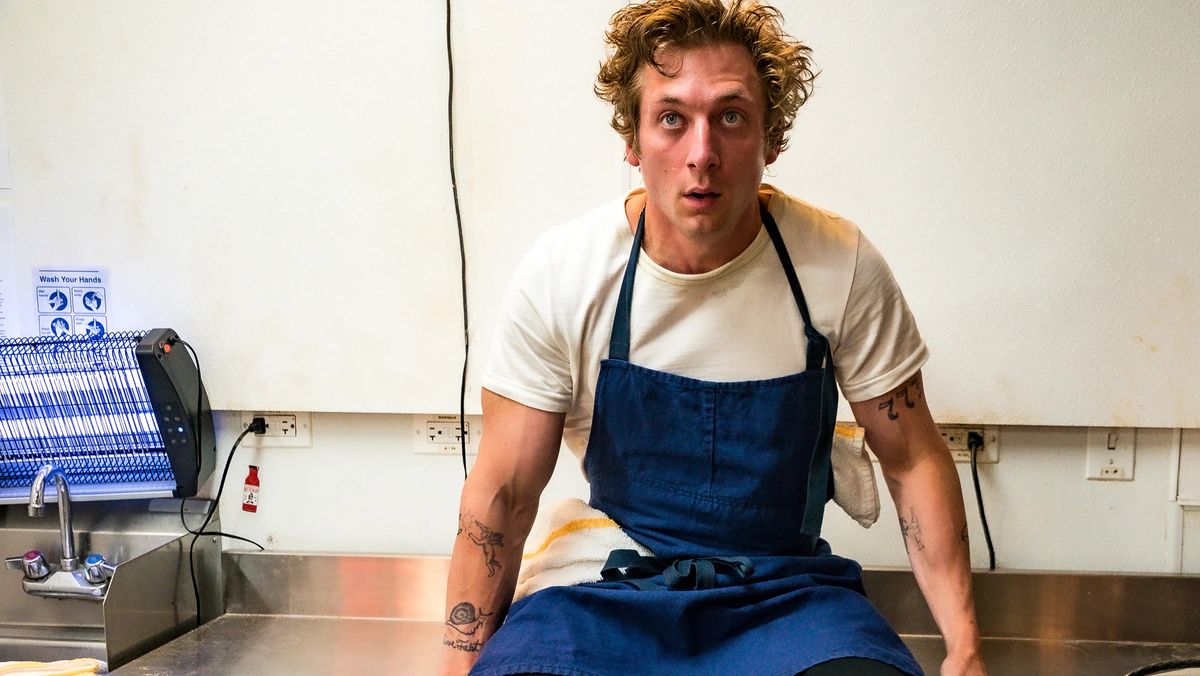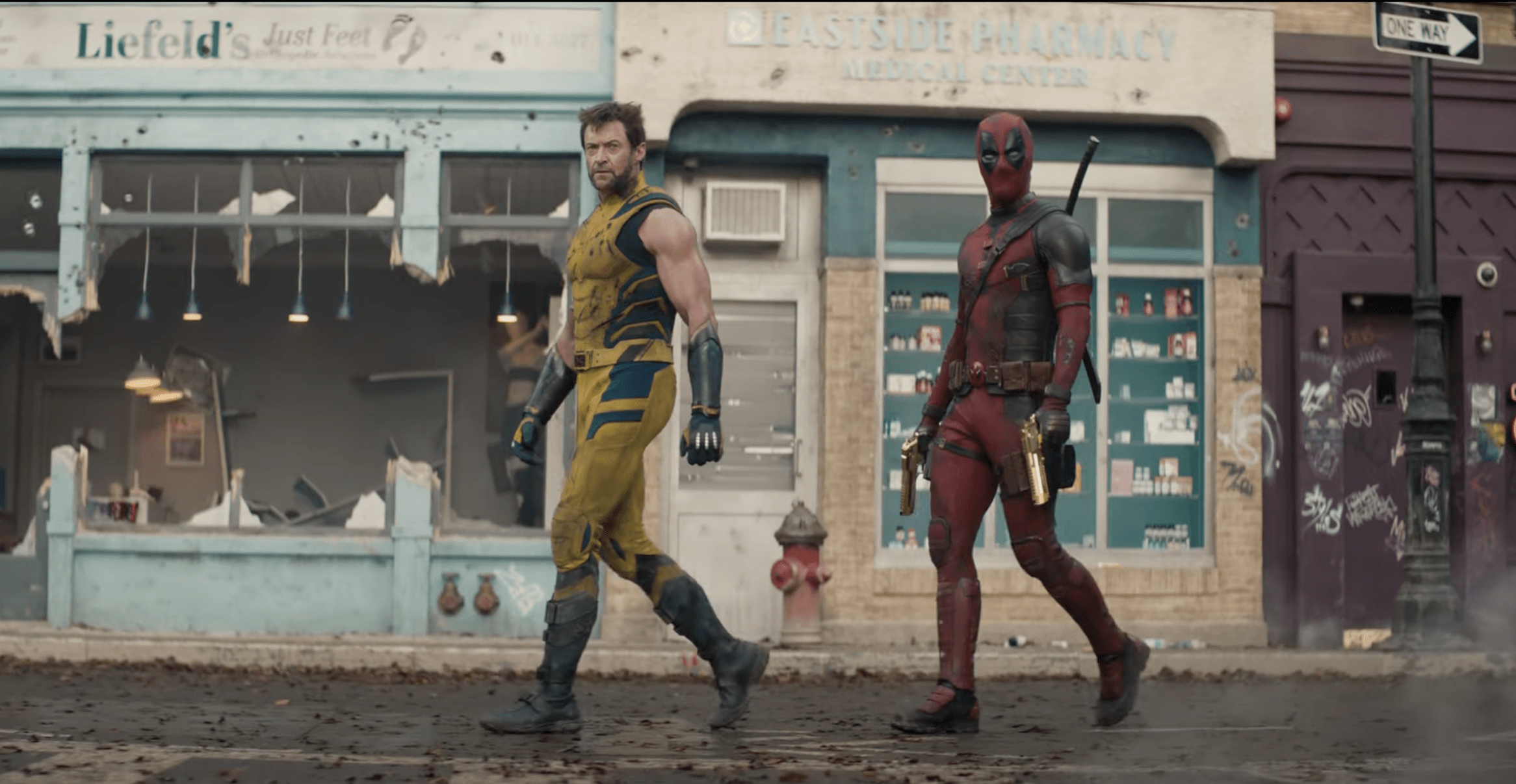Review: Make Some Room on Your Bookshelf for The Art of The Mandalorian by Phil Szostak
One of thing I look forward to most each time I fire up Disney+ for a new episode of The Mandalorian is the closing montage of concept art playing behind the credits of each episode. The brief insight it gives to the conceptualization of a scene while playing behind the names of often unsung professionals working to bring each episode to life functions as a small tribute. It seemed inevitable this art would end up in a collection. There’s no one better at curating a collection than Lucasfilm alum Phil Szostak, author of the beloved Star Wars art books, and The Art of The Mandalorian is a great addition.
A reason author Phil Szostak continues to guide these books is because he strikes a great balance of interviews, behind-the-scenes stories, and a showcase of several different artists interpretations. The Art of The Mandalorian isn’t just a visual buffet with some of the most distinct Star Wars art I’ve ever seen, it’s a story of how The Mandalorian became the first live-action television show. Each chapter features a different step in the journey. From Favreau’s initial pitch to Kathleen Kennedy and stretching to the morning of it’s debut when we all lost our minds over “Baby Yoda”.
The Art of The Mandalorian also provides a lot of great insight into Dave Filoni’s journey. Many fans might not be aware of the high regard Lucasfilm president and film industry veteran Kathleen Kennedy has held Filoni in since the first day of her tenure. When Filoni expressed his interest in live-action Star Wars storytelling, Kennedy immediately ensured he spend time on the various projects filming at Pinewood Studios. Filoni spent time on the set of each Star Wars film, most notably The Last Jedi, where director Rian Johnson put Filoni right in the action of blocking and shooting scenes. Reading about Filoni’s journey to the directing chair was one of the most enjoyable things in the book and complimented nicely by the story of Jon Favreau’s doorway to the galaxy far, far away.
Jon Favreau has cemented himself as a titan in the commercial film industry but the appeal of his films owe as much to the small storytelling details he considers as the spectacle his team puts on screen. The Mandalorian is no different and it’s a story Favreau’s been waiting to tell his whole life. Szostak does a great job telling the story of Favreau as a child watching A New Hope with his father in 1977 to the first meeting he had with Kennedy to potentially bring the same Star Wars that child imagined to life. It didn’t take much convincing the accomplished director would bring something special to Star Wars, as concept art for The Mandalorian began two days after his initial meeting with Kennedy.
As the story of the two show runners continues throughout The Art of The Mandalorian, we see concept art created along the way leading into production of the show. In addition to Filoni’s contributions, Lucasfilm vice-president and executive creative director Doug Chiang came onboard to lend his experience from working with George Lucas. Visualizing The Mandalorian started as small as a few sketches from Filoni on a legal pad to full concept pieces from several accomplished artists. In typical Star Wars approach to filming, the concept art helped drive the story when Chiang’s creative team hit the ground running in January 2018.
Distinguishing Din Djarin’s appearance was one of the first tasks the team took on. Many casual fans might not have been as exposed to Mandalorian history depicted in The Clone Wars and Rebels, so the only time they’ve seen Mandalorian armor was likely Boba and Jango Fett. A lot of influences went into crafting a unique appearance, from Game of Thrones Jon Snow to ancient Vikings. Artist Brian Matyas even looked to cosplayers for inspiration, acknowledging the endless amount of unique designs one might see at a convention or fan gathering.
As much work into the allies and enemies Din and Grogu would encounter on their journey. It’s clear from every artists’ comments and what we’ve seen onscreen, Favreau intended to bring Western-genre tropes into all elements of The Mandalorian. The concept artists were tasked with incorporating the feel of old Western films with the Star Wars aesthetic, while ensuring the costumes were indicative of the time period beyond Return of the Jedi. Yes, the Empire has fallen but there are parts of the galaxy that remain on the edge of the frontier, just as the late nineteenth-century American west. The design reflects all the previous aesthetic of Star Wars, while also making slight tweaks to the evolution to convey this is an era of Star Wars we’ve never seen.
A popular observation of what makes The Mandalorian so successful is it’s balancing act of feeling like Star Wars while remaining different. The Western tropes are not new to Star Wars, but usually they usually reflect a specific character or element. Favreau and Filoni worked hard to incorporate them into the entire first season. The team of concept artists provided a guiding light to help unify Star Wars and these tropes, giving the costume and set design, as well as the cinematography. Making the familiar slightly unfamiliar is another huge success of The Mandalorian, in my opinion.
Designing the Razorcrest also came specifically from Favreau’s childhood. As a child, Favreau’s family took him to aviation shows and the A-10 was always a favorite of his. He actually sat in the cockpit as a child and you can see (image above) the cockpit and thruster-housing for the Razorcrest came directly from this design. They also deliberately made it shiny, an aesthetic some artists weren’t sure felt Star Wars but seems to have paid off in the end.
Grogu, known as The Child through season one, also had a lot of different iterations. They landed on the design pictured above when Favreau asked artists to focus on the eyes of the child. A fun note, Gizmo of Gremlins was used as a scale reference for Grogu, which explains why I found something so familiar about him other than his obvious resemblance to that little, green Jedi Master we all know so well. The bassinet was also deliberately designed to float free from Din, as opposed to an early piece of concept art with a reverse Baby Bjorn carrier strapped to the Mandalorian’s back. It was important for Filoni that Din and Grogu to resemble Kazuo Koike’s manga Lone Wolf and Cub. The bond between Din and Grogu, as well as the need to protect this child, comes through in all of the art. The compassion and devotion to protecting hope children represent seems to be the distillation of The Mandalorian‘s first season.
Szostak structures The Art of The Mandalorian to break down the concept art, episode-by-episode. The discussions of each episode doesn’t remain contained, as these elements have ripple effects across the entire season. The cohesion and focus, as well as the selflessness of each director working on the episodes, is evident in the quotes and descriptions accompanying the art. It’s really hard to pace yourself reading this book because each page tells and shows such a beautiful story of bringing this fantastic series to life.
The Art of The Mandalorian succeeds in everything fans expect from Phil Szostak’s books. And since this is specific to the first season, it’s reasonable we can expect one for each season of The Mandalorian. The clarity and cofidence with which the second season is being executed no doubt draw from the solid foundation of work this book documents. Selfishly, this collection gives me a lot of hope the future of Star Wars is headed in a direction which will give us stories unique from what have come before.
There are a lot of live-action projects in the pipeline, both officially announced and rumored. I imagine and hope many of the gifted artists showcased in this book are hard at work dreaming up the images which will guide the filmmakers behind them. Author Phil Szostak does a fantastic job of giving each piece of concept art the proper spotlight while not overwhelming the readers or diminishing anything he features. The collaboration between Jon Favreau and Dave Filoni, who help guide a group of the first season’s talented directors, is also cemented as a key strength in the success of the show. Wherever Din and Grogu go next, I feel very confident their story is in the hands some great storytellers and artists.
One of my favorite quotes comes at the end of the book, from Jon Favreau:
Star Wars must have been powerful, because it’s dictated everything that I’ve explored and liked from a cinematic perspective since 1977. As I peel back the onion over the years, going to samurai movies with my dad, learning more about Westerns and the movies, and the myths that inspired Star Wars, it’s opened me up to understanding the Hero’s Journey, the monomyth, and Joseph Campbell. Also, that’s been a gateway into learning about myths of other cultures and about religions and the archetypes that exist in storytelling. As I’ve learned more, it’s refined my understanding of storytelling.
This is the way.
RATING: 9.5/10
The Art of the Mandalorian is currently available from your local bookstore and online retailers. Special thanks to Abrams Books for the copy used in this review.
Kyle Larson lives in Portland, Oregon. When he's not running trails, he's reading and writing.

